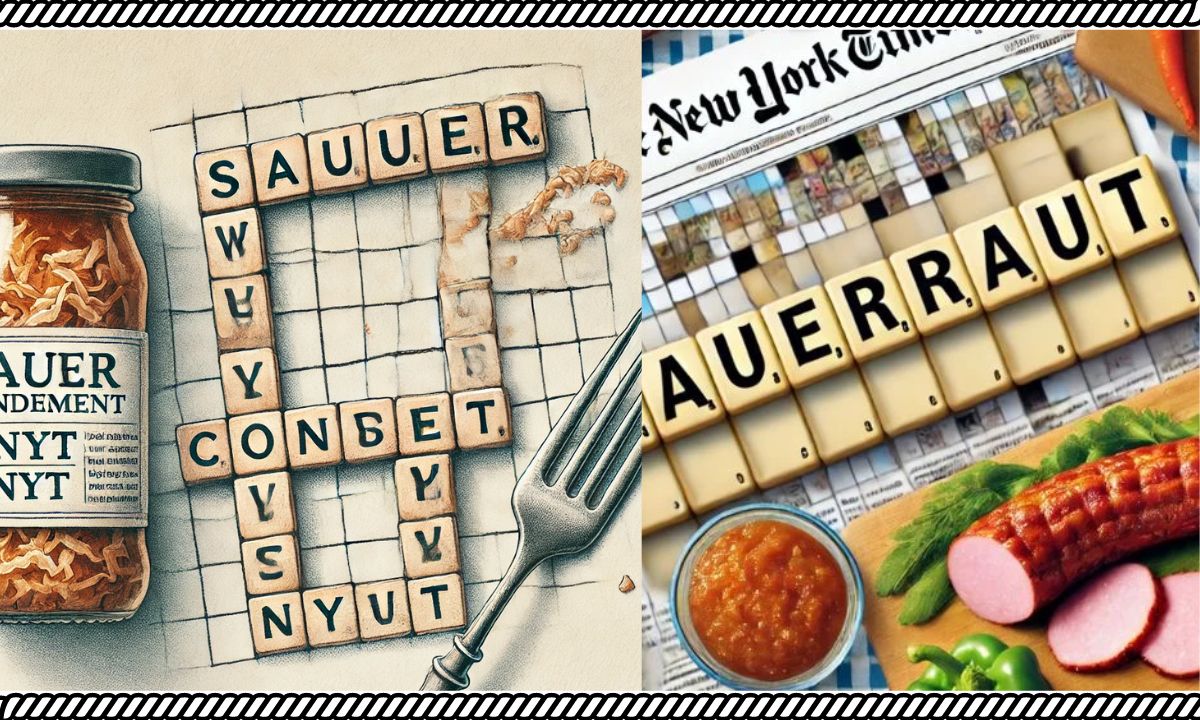Crossword puzzles have long been a favorite pastime for many. They challenge our minds and expand our knowledge. The New York Times (NYT) crossword is particularly renowned for its clever clues.
One such clue that has caught the attention of many solvers is “Sauer Condiment NYT”. Let’s explore this intriguing clue and its implications in the world of crosswords.
Unpacking “Sauer Condiment NYT”
The clue “Sauer Condiment NYT” refers to a popular German condiment. The answer to this clue is “kraut”, short for sauerkraut. Sauerkraut is a fermented cabbage dish. It’s known for its tangy, sour flavor. The word “sauer” in German means “sour”, hence the connection.
This clue appeared in the NYT Mini Crossword on March 11, 2024. It’s a prime example of how crosswords can introduce cultural elements. The clue combines language, cuisine, and wordplay. It challenges solvers to think beyond their immediate knowledge base.
The Science Behind Sauerkraut
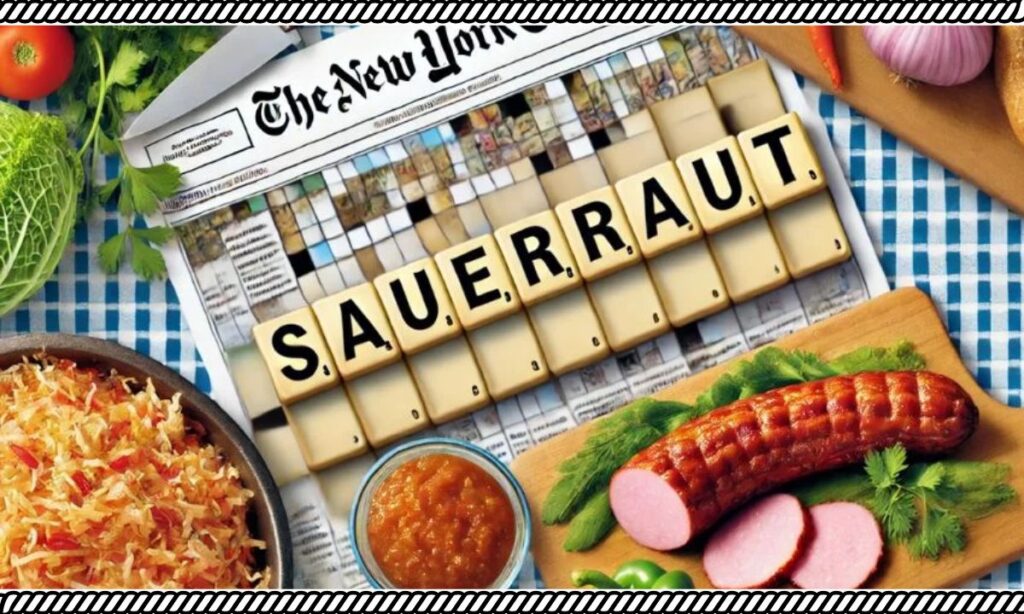
Sauerkraut isn’t just a tasty condiment. It’s also a scientific marvel. The process of making sauerkraut involves fermentation. Lactic acid bacteria naturally present on cabbage leaves drive this process.
To make sauerkraut, cabbage is finely shredded. Salt is added to draw out moisture. This creates a brine. The cabbage is then packed tightly into containers. This removes air and creates an anaerobic environment. Over time, the bacteria convert sugars in the cabbage into lactic acid. This acid gives sauerkraut its characteristic tang.
The fermentation process also increases the nutritional value of the cabbage. Sauerkraut is rich in vitamins C and K. It’s also a good source of fiber and probiotics. These health benefits have contributed to sauerkraut’s enduring popularity.
“Sauer Condiment NYT” In Crossword Culture
Crossword puzzles often reflect cultural knowledge. Food-related clues like “Sauer Condiment NYT” are common. They serve multiple purposes in crosswords. First, they test solvers’ general knowledge. Second, they introduce cultural elements to a wide audience.
Such clues also allow for clever wordplay. The use of “sauer” instead of “sour” adds an extra layer of difficulty. It requires solvers to make a linguistic connection. This type of clue is typical of the NYT crossword’s style. It combines knowledge, language skills, and lateral thinking.
Food clues in crosswords can also spark curiosity. They might encourage solvers to learn more about different cuisines. In this way, crosswords serve an educational purpose beyond mere entertainment.
Case Study: NYT Mini Crossword, March 11, 2024
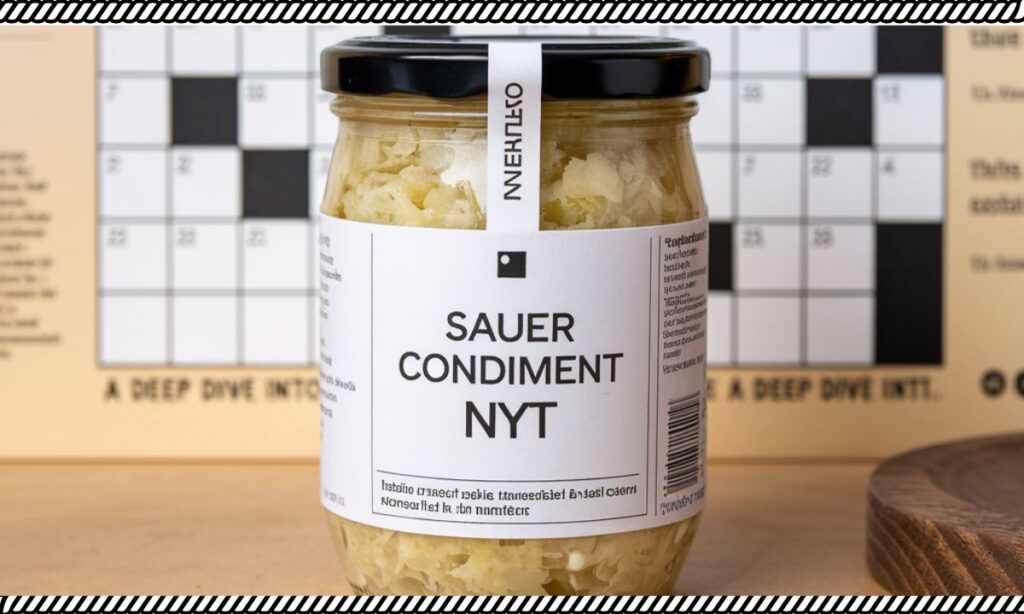
The NYT Mini Crossword on March 11, 2024, featured the clue “Sauer Condiment NYT”. This clue stumped many solvers. It required knowledge of German cuisine. The answer, “kraut”, was a shorthand for sauerkraut. This case study highlights the clever use of cultural references in crosswords.
Introduction To The Clue
On March 11, 2024, the NYT Mini Crossword featured the clue “Sauer Condiment NYT”. This clue appeared in a prominent position in the puzzle. It served as a key entry point for solving the rest of the grid.
Clue Construction And Solver Engagement
The construction of this clue is clever in its simplicity. It uses just three words to evoke a specific cultural reference. The inclusion of “NYT” in the clue itself is a meta-reference. It acknowledges the puzzle’s own context within the New York Times.
This clue engages solvers on multiple levels. It requires knowledge of German language and cuisine. It also demands an understanding of crossword conventions. Solvers must recognize that “sauer” is likely a foreign language term. They must then make the connection to sauerkraut and its shortened form, “kraut”.
Read This Blog: Rap-Quotes.Com Blog Archives – The Evolution Of Hip-Hop Through Lyrics
Educational Impact And Cultural Exploration
The use of this clue has an educational impact. It introduces solvers to an aspect of German cuisine. For those unfamiliar with sauerkraut, it might spark curiosity. This could lead to further exploration of German food culture.
Moreover, the clue highlights the global nature of modern cuisine. Sauerkraut, while German in origin, is now enjoyed worldwide. This reflects the interconnectedness of global food culture.
Thematic Integration In Puzzles
While this clue appeared in a mini crossword, it demonstrates how themes can be integrated into puzzles. Food-related clues might be part of a larger culinary theme. Alternatively, they might stand alone as interesting knowledge points.
In larger puzzles, such clues could be part of a theme involving international cuisines. They might also be part of a wordplay theme involving homonyms or puns.
Strategies For Mastering Food Clues In Crosswords
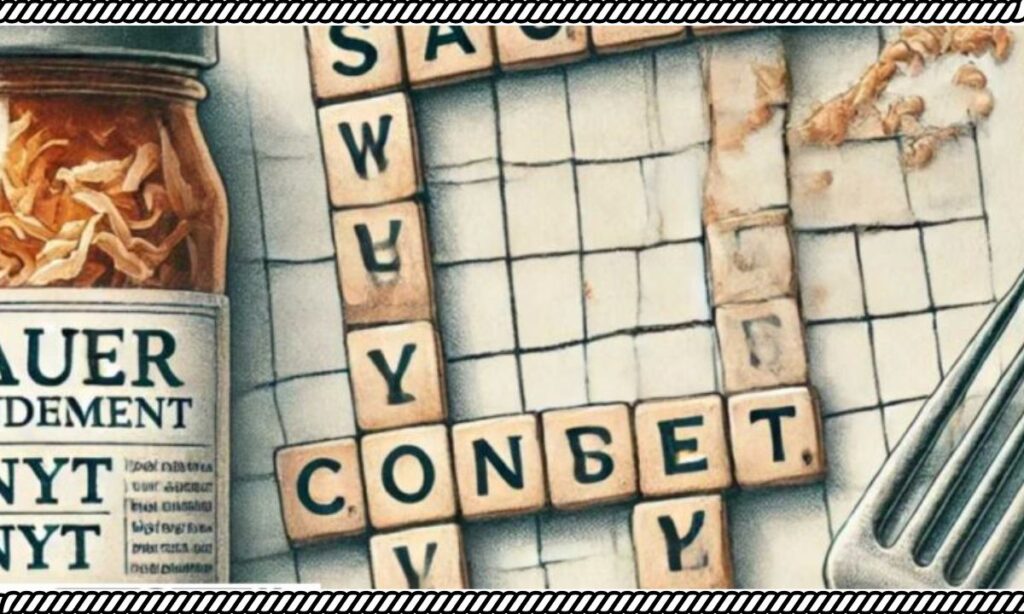
Food clues are common in crosswords. They test culinary knowledge and wordplay skills. To master them, expand your food vocabulary. Read cookbooks and food blogs regularly. Practice solving food-themed puzzles. Analyze clues for hints about cuisine or cooking methods.
Understanding The Basics
To master food clues in crosswords, start with the basics. Familiarize yourself with common culinary terms. Learn about different cuisines and their signature dishes. Read cookbooks and food blogs to expand your knowledge.
Pay attention to food-related current events and trends. These often make their way into crosswords. Remember that crossword clues can reference both modern and historical aspects of food culture.
Analytical Approaches
When faced with a food clue, analyze it carefully. Look for hints within the clue itself. Words like “dish”, “cuisine”, or “chef” can provide context. Consider the length of the answer and any letters you already have filled in.
Think about different categories of food clues. These might include ingredients, cooking methods, or famous chefs. Understanding these categories can help you narrow down possible answers.
Using Cross-References
Crosswords often include multiple related clues. A food clue might be connected to other clues about geography or culture. Use these connections to your advantage. If you’re stuck on a food clue, solving related clues might provide helpful context.
Read This Blog: ProcurementNation.com Shipping: What You Need to Know
Example Clues And Solving Techniques
Here are some example food clues and techniques for solving them:
- “Italian rice dish” (7 letters) – Think of popular Italian foods. “Risotto” fits the clue and letter count.
- “Spicy Mexican sauce” (5 letters) – Consider common Mexican condiments. “Salsa” is a likely answer.
- “French chef’s hat” (5 letters) – Combine culinary and fashion knowledge. “Toque” is the traditional chef’s hat.
When solving, start with what you know. Fill in any letters you’re sure of. Use crosswords to confirm or eliminate possible answers.
Practicing Regularly
Consistent practice is key to improving your crossword skills. Solve food-themed puzzles whenever possible. Keep a food dictionary handy for reference. Over time, you’ll build a mental database of common food clues and answers.
Community and Crossword Engagement
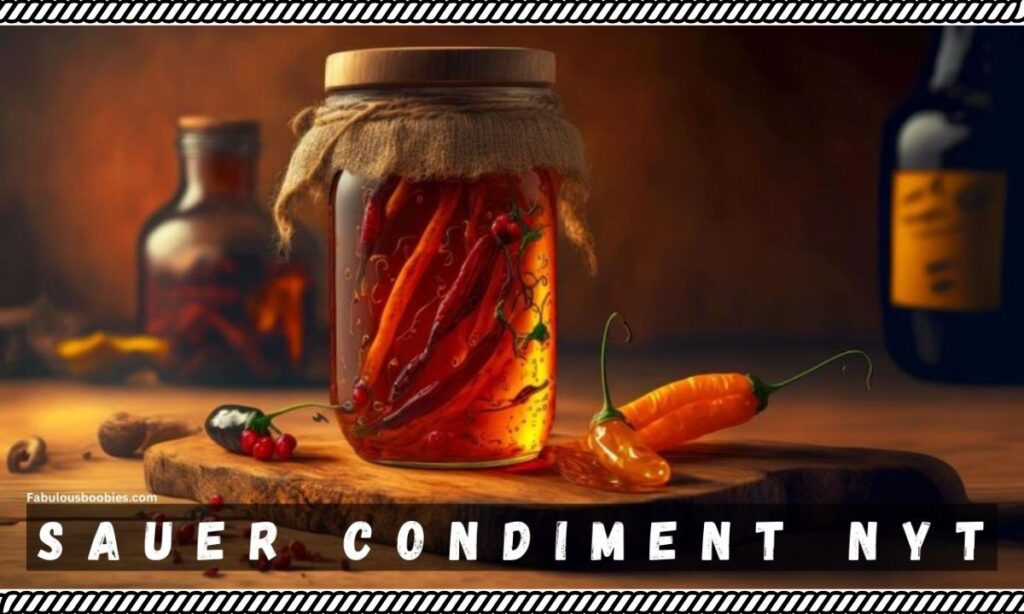
Joining a crossword community can enhance your solving experience. Online forums and social media groups offer opportunities to discuss puzzles. You can share tips, ask for help, and learn from experienced solvers.
Many newspapers and crossword publishers have dedicated online communities. These are great places to engage with fellow enthusiasts. You might even get insights from crossword constructors themselves.
Participating in crossword tournaments can be fun and educational. These events often include food-themed puzzles. They’re a great way to test your skills and learn new solving strategies.
Essential Online Tools And Communities
- Crossword Solver websites: These help you find answers based on known letters.
- Online dictionaries and food encyclopedias: Great for looking up unfamiliar terms.
- Crossword blogs: Offer daily puzzle commentary and solving tips.
- Reddit’s r/crossword: A active community for discussing all things crossword-related.
- NYT Crossword Twitter: Provides hints and engages with solvers.
Tips For Leveraging These Resources Effectively
• Use tools to supplement, not replace, your knowledge
• Engage actively in online communities
• Keep a log of new words and concepts learned
• Practice regularly with a variety of puzzle difficulties
• Utilize puzzle archives for targeted practice
• Follow crossword constructors on social media
• Participate in online solving competitions
• Use mobile apps for on-the-go practice
• Read crossword blogs for solving strategies
• Contribute your own insights to community discussions
Frequently Asked Questions
What makes a good food-related crossword clue?
A good food clue is clever, accurate, and fair. It should challenge solvers without being obscure.
How often do food clues appear in NYT crosswords?
Food clues appear regularly, often multiple times per week. They’re a staple of crossword themes.
Can solving crosswords improve my culinary knowledge?
Yes, crosswords can introduce you to new foods, cooking terms, and culinary figures.
Are there crossword puzzles specifically focused on food?
Yes, many publications offer food-themed crosswords. Some cooking magazines include them as well.
How can I improve my skills with food-related clues?
Practice regularly, read about food, and engage with crossword communities. Cooking and trying new cuisines can also help.
Conclusion
The “Sauer Condiment NYT” clue exemplifies the clever and educational nature of crossword puzzles. It challenges solvers to connect language, culture, and cuisine. Food clues like this one add flavor to the crossword solving experience. They encourage learners to expand their knowledge beyond the puzzle grid.
Mastering food clues in crosswords requires a combination of knowledge, practice, and analytical thinking. By understanding clue construction, using available resources, and engaging with the crossword community, solvers can enhance their skills. The journey of crossword solving is one of continuous learning and enjoyment.

Brook is an experienced content writer and digital marketer, skilled in creating SEO-friendly content that resonates with audiences. He helps brands enhance their online presence through targeted campaigns, with expertise in blog writing, social media management, email marketing, and SEO optimization.

